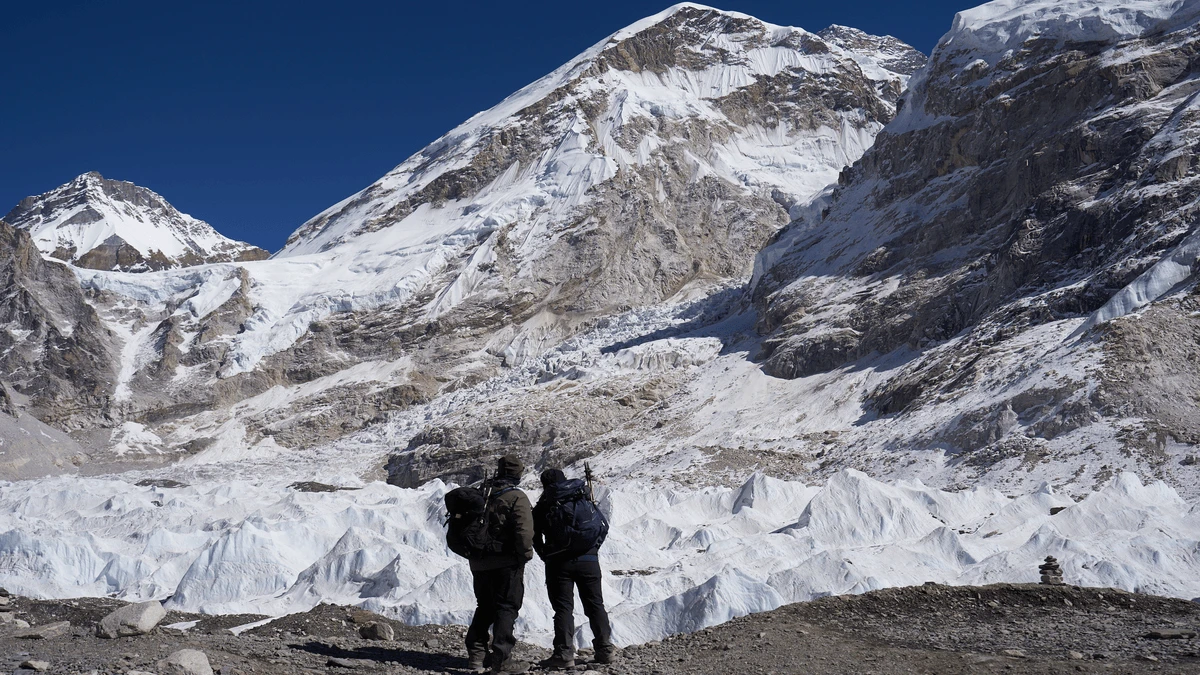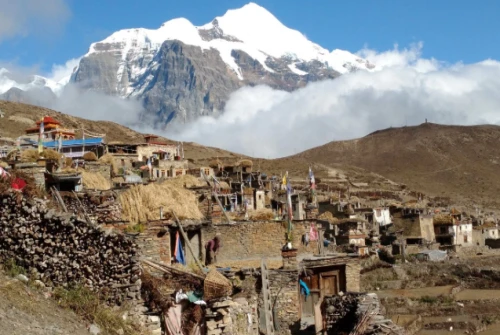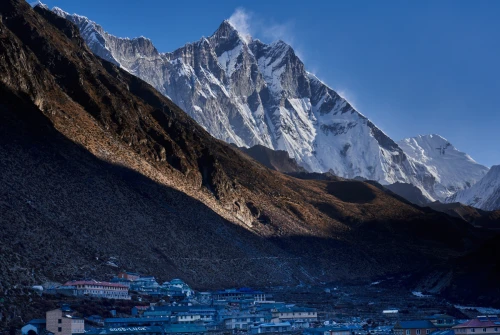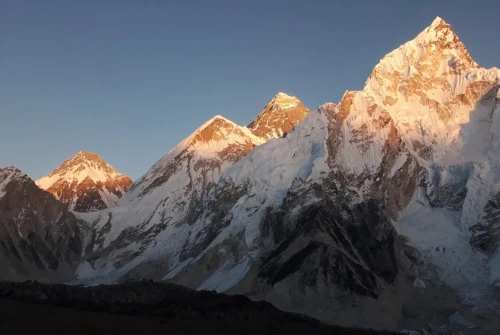What is the Khumbu Valley, and why is it important for Everest trekkers?
The Khumbu Valley is a region in northeastern Nepal, located in the Solukhumbu District of the Sagarmatha Zone, and is part of the Mount Everest National Park. It is best known for being the gateway to the Everest Base Camp trek and is home to some of the most breathtaking landscapes in the world. The valley lies at the foot of Mount Everest (8,848 meters), the tallest mountain in the world, and is a cultural and spiritual hub for the Sherpa community who reside there. The Khumbu Valley has gained international fame for its stunning views of the surrounding Himalayan peaks, including Lhotse, Makalu, Ama Dablam, and Nuptse.
Key Features of the Khumbu Valley:
- Cultural Significance: The valley is the heart of the Sherpa culture. It is home to traditional Sherpa villages, monasteries, and Buddhist stupas, where trekkers can learn about the local way of life, religion, and customs.
- Glaciers and Water Sources: The Khumbu region has several glaciers, including the Khumbu Glacier, which is a vital water source for the region. These glaciers are also a crucial part of the landscape that trekkers pass through during the Everest Base Camp trek.
- High-altitude Terrain: The valley stretches from about 2,860 meters (9,383 feet) at Lukla (the starting point for many treks) to over 5,380 meters (17,600 feet) at Everest Base Camp. The terrain includes forests, alpine meadows, rocky moraine, and glacial lakes.
- Biodiversity: The region is home to diverse flora and fauna, including species such as the snow leopard, red panda, yaks, and Himalayan tahr, among others.
- Trekking Routes: The Khumbu Valley serves as the main trekking hub for climbers and adventurers attempting to reach Mount Everest. The Everest Base Camp trek follows a route that passes through the valley, offering panoramic views of the world's highest peaks and leading to one of the most iconic destinations in the world Everest Base Camp.
Why is the Khumbu Valley Important?
The Khumbu Valley is not only a prime trekking destination but also a region rich in cultural heritage and natural beauty. It plays a vital role in Nepal's tourism industry, especially trekking tourism, and supports the livelihoods of the local Sherpa community. Additionally, the region is a significant part of the global environmental conversation due to the climate change challenges it faces, especially as global warming continues to cause glacier retreat, altered weather patterns, and loss of biodiversity in the area.
In summary, the Khumbu Valley is a gem of the Himalayas, offering both natural beauty and cultural richness, but it is also facing the growing challenge of environmental degradation due to global warming and climate change.
The Effects of Melting Glaciers
The most visible and worrying impact of global warming on the Everest region is the rapid melting of glaciers. The Khumbu Glacier, which trekkers pass on their way to EBC, has been retreating steadily over the past few decades. In fact, it has retreated by over 1.5 kilometers in the last century. The glacier’s shrinking mass is affecting not only the landscape but also the water sources that local communities and trekkers depend on.
Glacier melt results in a higher frequency of rockfalls and avalanches, especially in areas like Lobuche and Kala Patthar, where the trail is located near melting ice. The receding glaciers are causing increased instability in areas once considered safe for trekking. In some cases, trekking routes have had to be rerouted, leading to increased challenges for both trekkers and local communities.
For trekkers, the melting glaciers pose not just environmental hazards but also safety concerns. Rockfalls, avalanches, and landslides are becoming more frequent, especially during the monsoon season and the spring/autumn trekking months. As these events become more unpredictable, trekkers must exercise heightened caution and preparedness when navigating the region.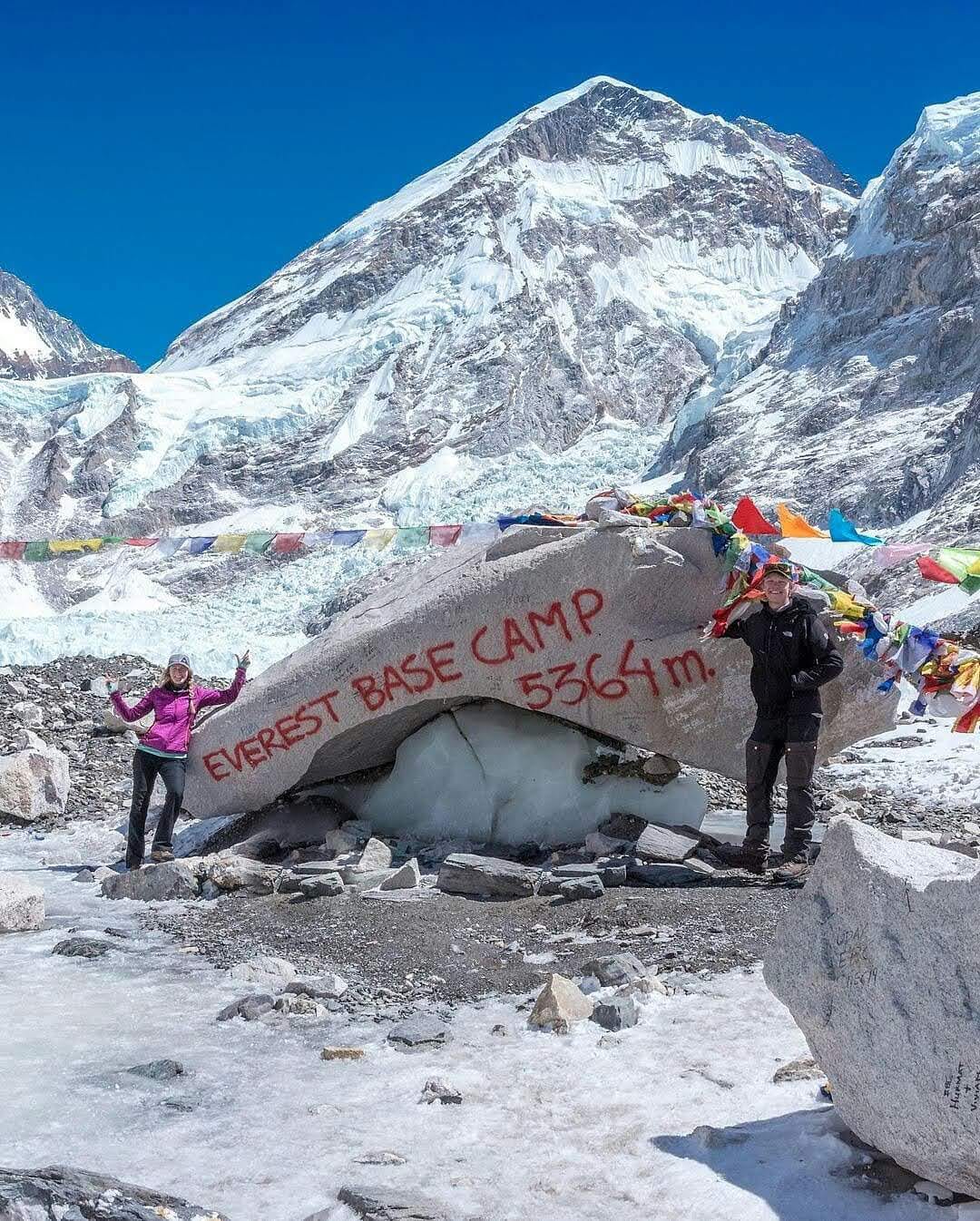
Changing Weather Patterns
Alongside melting glaciers, changing weather patterns are wreaking havoc on the region. The Khumbu Valley is experiencing more unpredictable weather, with extreme rainfall and wind conditions occurring at higher altitudes, particularly in the spring and autumn seasons. This volatility affects not just the trekking experience but also local communities, whose agricultural activities are highly dependent on stable weather patterns.
Erratic weather has also resulted in longer monsoon seasons, leading to a shorter trekking window. The previously well-established trekking season in spring (March-May) and autumn (September-November) is becoming increasingly unreliable, with heavy rainfall and snowfall extending into the peak trekking months. This not only affects the comfort of trekkers but also increases the risk of weather-related accidents on the trail.
Moreover, as temperatures at high altitudes rise, the high-altitude cold that trekkers often experience is becoming less predictable. While trekking to Everest Base Camp used to guarantee a certain level of cold, this is becoming less consistent, with some seasons seeing unseasonably warm temperatures, while others are marked by freezing cold conditions at the same altitudes.
Impact on Local Communities
The people living in the Khumbu region, primarily Sherpas, are also feeling the effects of climate change. The most immediate impact is water shortages. Many Sherpa villages rely on glacier-fed streams for their water supply. As glaciers shrink, these water sources are drying up or becoming erratic. This makes water scarcity a significant challenge for both villagers and trekkers.
Additionally, agriculture, which is a primary livelihood for many Sherpas, is being impacted. The growing season for crops such as potatoes and barley is shrinking due to unpredictable weather and shorter growing periods, resulting in lower yields. This affects both the economy and food security for these remote communities.
Moreover, the tourism-dependent economy is facing challenges as well. As weather patterns become more erratic and trekking seasons shorten, many local businesses, including teahouses and lodges, face lower tourist numbers. This threatens the livelihoods of those who depend on trekking tourism for survival.
How Trekkers Can Minimize Their Environmental Impact
While the effects of global warming on the Everest region are undeniable, there are ways that trekkers can help mitigate their environmental impact. Every small action counts, and as responsible travelers, we can make a difference in ensuring the preservation of the Himalayas for future generations.
Here are some eco-friendly trekking tips to reduce your footprint:
- Bring a reusable water bottle: Single-use plastic bottles are a major pollutant in the region. Refill your bottle at designated water stations or use water purification tablets to ensure you’re always hydrated while keeping plastic out of the environment.
- Stay in eco-friendly lodges: Many teahouses in the Everest region now use solar power, and promote the use of biodegradable materials instead of plastics. Opt for these eco-conscious accommodations.
- Carry out all trash: Be sure to take all your waste with you, including food wrappers, packaging, and tissues. Many trekking companies now provide trash bags for trekkers to help with this.
- Avoid plastic straws: Plastic straws are a major source of waste in the mountains. Many teahouses and restaurants in the region have switched to alternatives like metal or bamboo straws, so avoid using single-use plastics.
- Support local initiatives: Participate in clean-up drives organized by trekking agencies, or donate to local organizations working to preserve the environment in the Everest region.
Sustainability Initiatives in the Everest Region
Despite the challenges posed by global warming, the Everest region is seeing a positive shift toward sustainable tourism. Many organizations, both local and international, are working to reduce the environmental impact of trekking and preserve the region’s delicate ecosystem.
- Sagarmatha Pollution Control Committee (SPCC): This committee has been actively working on waste management programs to reduce garbage in the Everest region. It has introduced initiatives like trash collection drives and programs to encourage trekkers and locals to reduce plastic waste.
- Eco-friendly Lodges: Many teahouses now use solar panels for electricity and practice water recycling. Choosing to stay in these eco-friendly lodges directly supports sustainable businesses.
- Trekking Companies’ Green Policies: Several trekking companies, such as Nepal Eco Adventure and Himalayan Glacier Trekking, promote green practices like reducing carbon emissions, planting trees, and supporting local conservation projects.
The Road Ahead: Hope for the Khumbu Region
While the situation is undoubtedly urgent, there is hope for the future of the Everest region. As awareness of climate change grows, more trekking companies and trekkers are adopting sustainable practices. The Khumbu region, with the support of responsible travelers and locals, can continue to thrive.
Governments, NGOs, and environmental groups are focusing on conservation initiatives such as reforestation and sustainable tourism policies. Efforts are also being made to limit the impact of climate change, including better waste management and stricter regulations on plastic use.
By trekking responsibly, supporting local communities, and spreading awareness about the importance of sustainable tourism, we can help protect the Everest region from further environmental degradation.
FAQs: The Impact of Global Warming on the Khumbu Region and Everest Base Camp Trek
What is the impact of global warming on the Khumbu region?
Global warming is causing significant changes in the Khumbu region, including rising temperatures, melting glaciers, and more erratic weather patterns. These changes threaten the region's ecosystem, infrastructure, and trekking routes to Everest Base Camp.
How is global warming affecting the Everest Base Camp Trek?
The Everest Base Camp Trek is being directly impacted by global warming. As glaciers melt and temperatures rise, trekking routes become more dangerous, and some areas, like the Khumbu Icefall, are increasingly unstable due to the thawing of frozen ice.
What are the primary effects of climate change on Mount Everest’s glaciers?
The glaciers surrounding Mount Everest, including the Khumbu Glacier, are rapidly melting due to global warming, leading to increased rockfalls, avalanches, and unstable ice formations along trekking routes, particularly in the Khumbu Icefall.
How is the changing weather in the Khumbu Valley affecting trekkers?
With unpredictable weather patterns, trekkers on the Everest Base Camp route face greater risks of sudden storms, avalanches, and fluctuating temperatures, which make trekking conditions more hazardous and difficult to predict.
Can global warming cause avalanches on the Everest Base Camp Trek?
Yes, the rising temperatures and melting glaciers are increasing the frequency of avalanches in the Khumbu region, particularly in the Khumbu Icefall, posing serious threats to trekkers and mountaineers on the Everest Base Camp route.
How is global warming impacting the Sherpa communities in the Khumbu region?
Sherpa communities are directly affected by global warming. With the loss of glaciers and the changes to their natural environment, agriculture, water sources, and their traditional way of life are being disrupted, making survival increasingly difficult.
What can trekkers do to minimize their environmental impact on the Everest Base Camp Trek?
Trekkers can reduce their environmental footprint by following Leave No Trace principles, minimizing plastic use, supporting eco-friendly teahouses, and being mindful of waste disposal while trekking in the Everest region.
How are local organizations addressing global warming in the Everest region?
Various organizations, including the Nepal Mountaineering Association (NMA) and local NGOs, are working on sustainability initiatives, such as waste management programs, promoting eco-friendly tourism, and supporting climate adaptation strategies for local communities in the Khumbu region.
Is global warming affecting Everest Base Camp’s accessibility?
Yes, due to the melting of glaciers and shifting weather patterns, the traditional Everest Base Camp trekking route is becoming more challenging and dangerous. There are concerns that some routes may become inaccessible in the future.
What steps are being taken to preserve the Khumbu region and Everest Base Camp Trek?
Efforts are underway to combat the effects of global warming in the Khumbu region, including initiatives for better waste management, sustainable tourism practices, and projects aimed at restoring the health of glaciers and ecosystems in the area.
Final Thoughts: The Role of Responsible Trekkers
As trekkers, we have the power to make a difference. Our actions can help preserve the majestic beauty of the Everest region for future generations. By embracing sustainability and supporting local initiatives, we can mitigate the impact of global warming and ensure that future travelers can continue to experience the wonders of the Khumbu Valley.
For those planning the Everest Base Camp trek, consider this not just an adventure to the world’s highest peak, but also a journey to protect and preserve one of the most precious ecosystems on Earth.
